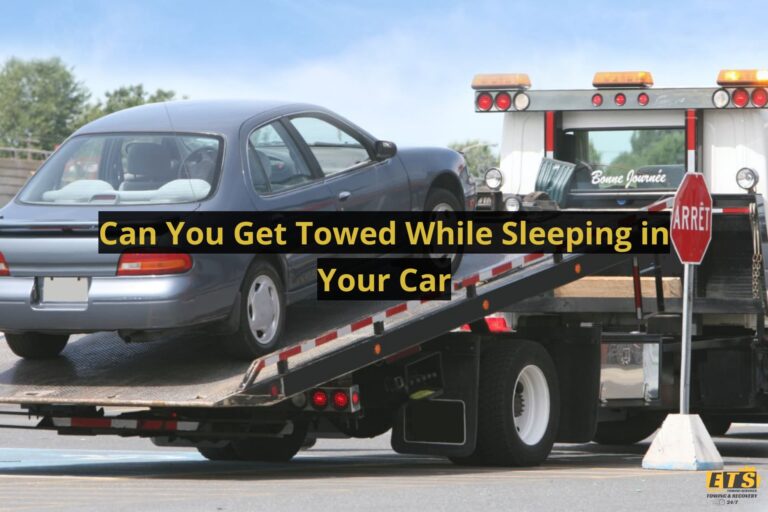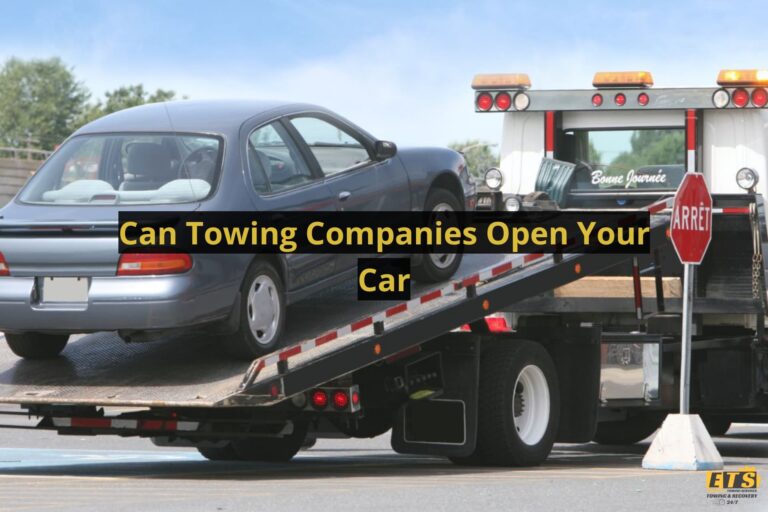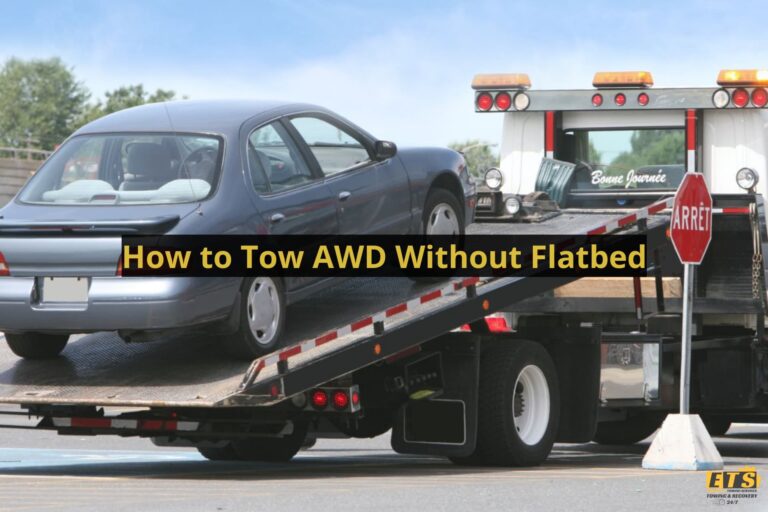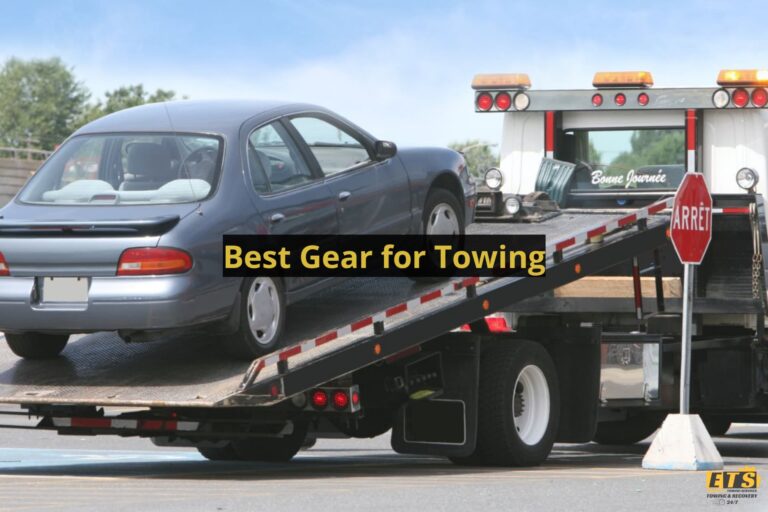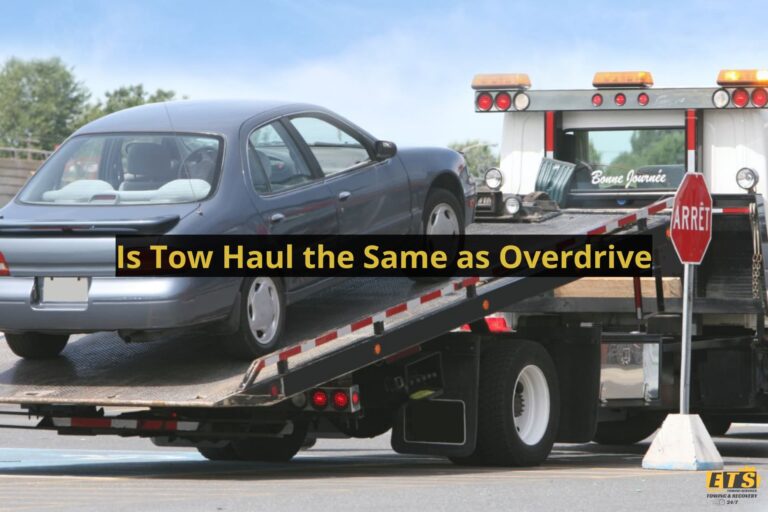How To Tow An Automatic Car
The information presented in this article is provided for general informational purposes only, and may not reflect the current laws or legal developments. This article does not constitute legal advice, and the reader should not act on the information contained in this article without first seeking professional counsel. We make no guarantees about the accuracy, completeness, or adequacy of the information contained in this article. The reader assumes all risks and liabilities associated with any actions taken as a result of reading this article. To obtain legal advice on your specific matter, please contact a qualified legal professional.
Have you ever found yourself in a situation where you need to tow an automatic car but have no idea how? It can be daunting and stressful, especially if you don’t want to cause any damage to your vehicle. But fear not! With the right knowledge and equipment, towing an automatic car is possible.
Firstly, it’s important to understand that towing an automatic car requires a different approach than a manual one. The transmission system of an automatic car operates differently from that of a manual, which means there are some things you need to keep in mind before attempting to tow it.
In this article, we’ll guide you through the steps on how to safely and efficiently tow an automatic car without causing any harm or damages along the way. So let’s get started!
Understanding Automatic Transmission Systems
Did you know that automatic transmission systems are more common than manual ones in the United States? In fact, according to a recent survey, around 70% of cars sold in the US have an automatic transmission system.
This means that there is a high chance that you or someone you know owns an automatic car and may need to tow it someday. However, towing an automatic car can be tricky if you don’t understand how its transmission system works.
It’s crucial to maintain your vehicle’s automatic transmission regularly to avoid common problems such as slipping gears, delayed engagement, and overheating. Neglecting this maintenance could lead to costly repairs or even complete failure of the transmission system.
If you find yourself in a situation where you need to tow your automatic car, it’s essential to follow specific guidelines based on your vehicle make and model. Improperly towing an automatic car can cause severe damage to the drivetrain or result in accidents on the road.
So before attempting any towing methods, take time to learn about your car’s unique requirements and limitations for safe and efficient transportation.
Preparing Your Vehicle For Towing
- Before towing your vehicle, it’s important to check all the fluids, including engine oil, transmission fluid, coolant, and power steering fluid.
- Make sure to inspect your brakes, too, to make sure they’re functioning properly and ready for the road.
- When you’re ready to tow, you should secure your load by using a tow bar, tow rope, or tow chains.
- Make sure the tow bar is attached properly to the hitch on your vehicle.
- Once your load is secure, it’s a good idea to double check your brakes again before driving off.
- Lastly, make sure to always follow the manufacturer’s instructions when towing to ensure your safety.
Checking Fluids
Are you planning to tow an automatic car? Before hitting the road, it is important to prepare your vehicle properly.
One of the crucial steps is checking fluids. The fluid level in the transmission plays a vital role in maintaining its lubrication and cooling system. Failing to check this can lead to severe transmission damage.
To begin with, locate the dipstick for the transmission fluid under the hood of your vehicle. Make sure that the engine is running and keep it idle for a minute or two before inspecting the fluid level. Pull out the dipstick, wipe it clean with a rag, insert it back into place, and then take it out again. Check where the fluid falls on the stick – if it’s below or above recommended levels, add or remove some as necessary.
Furthermore, ensure that other essential fluids such as power steering and brake fluids are at their optimal levels too before towing an automatic car. These simple checks can save you from significant repair costs down the line due to negligence.
Remember always to follow manufacturer instructions regarding towing capacity limits and precautions for your specific make and model of vehicle!
Inspecting Brakes
Now that you’ve checked the fluids and examined your suspension, don’t forget to inspect your brakes before towing an automatic car. This is crucial in ensuring safe travels on the road, especially when carrying heavy loads.
To begin with, check if there are any visible signs of wear and tear such as cracks or thinning brake pads. If you notice these issues, replace them immediately.
Additionally, examine the brake lines for leaks or damage and make sure they’re properly connected without being too tight or loose.
You should also test your brakes by performing a few simple steps. First, start the engine and press down on the brake pedal to see if it feels spongy or unresponsive. If so, this may indicate air in the brake lines or low fluid levels.
Next, take a short drive around an empty parking lot to ensure that both the foot and emergency brakes respond correctly. These checks can prevent accidents caused by faulty braking systems while towing your vehicle.
Securing Load
Now that you’ve checked your fluids, suspension, and brakes before towing an automatic car, there’s one more crucial aspect to consider – securing the load. Proper load distribution is essential to ensure safe travels on the road without compromising vehicle stability.
When preparing for a tow, it’s important to distribute the weight of the load evenly across all four tires. Uneven weight distribution can cause swaying or fishtailing while driving at high speeds, leading to accidents on the road.
To secure the load in place, use appropriate tie-down techniques such as ratchet straps or chains. Ensure that they’re tightly secured and positioned at angles so that they don’t loosen during transit.
Additionally, double-check your connections after every stop along the way.
By following these guidelines for load distribution and tie-down techniques, you’ll have peace of mind knowing that your cargo won’t shift or move around while being transported. This step ensures not only safety but also prevents potential damage to both your vehicle and load.
Choosing The Right Towing Equipment
After preparing your vehicle for towing, the next step is to choose the right equipment. When it comes to towing an automatic car, you need to be extra careful as there are certain precautions that should be taken.
Before we dive into choosing the right towing equipment, let’s first discuss some important factors such as towing weight and distance. Towing weight refers to how much weight your tow vehicle can safely pull without causing damage or compromising safety. It’s crucial to know your car’s maximum towing capacity before selecting the appropriate equipment.
Towing distance is another factor that needs attention. Long-distance towing requires more preparation than short-distance because of increased wear and tear on both vehicles involved.
Now that we’ve covered some key considerations when it comes to towing an automatic car let’s look at a few essential pieces of equipment to make this task easier:
- Tow Dolly – A two-wheel dolly lifts the front tires off the ground while allowing the rear wheels of your vehicle to roll freely.
- Flatbed Trailer – This type of trailer allows all four wheels of your car to remain off the ground during transport.
- Tow Bar – Attaches directly from one vehicle’s hitch ball mount to another’s frame-mounted tow bar brackets.
- Safety Chains – These chains act as backup security measures in case any part of your primary connection fails.
By having a thorough understanding of what types of towing equipment work best with automatic cars, you will ensure safe and efficient transportation every time. Remember always to adhere strictly by manufacturer guidelines when it comes to weights and distances for successful outcomes!
Attaching The Tow Bar Or Dolly
Now that you have prepared your automatic car for towing, it’s time to choose between a tow bar and dolly.
A tow bar is a metal frame that connects directly to the vehicle’s chassis and allows all four wheels of your car to roll on the ground during towing. On the other hand, a dolly raises either the front or rear end of the car off the ground and only two wheels are in contact with the road.
Both options have their pros and cons.
The advantage of using a tow bar is its simplicity; it can be easily attached and detached from your vehicle without additional equipment needed. However, this method requires an even surface as all four wheels must remain on the ground at all times.
Meanwhile, using a dolly gives more flexibility when encountering uneven terrain since only one set of wheels will touch the road. But attaching a dolly takes longer than hooking up a tow bar as it involves aligning each wheel onto separate platforms.
Consider which option suits your needs before making any final decisions. If you plan to travel long distances over flat roads, then using a tow bar may be sufficient for you. But if you expect some rough terrain along your route, go for a dolly instead.
Whatever you decide, ensure everything is secured correctly before starting to move your vehicle!
Operating Your Vehicle During Towing
Did you know that according to a study conducted by AAA, over 40% of American drivers don’t properly secure their vehicles when towing? This statistic highlights the importance of understanding how to operate your vehicle during towing. If not done correctly, it can result in damage to both your car and the tow truck.
Driving Techniques:
- Keep a steady speed and avoid sudden braking or acceleration
- Use your turn signals earlier than usual to give other drivers plenty of notice
- Avoid sharp turns or lane changes as they may cause swaying or fishtailing
- Stay alert and pay attention to any unusual noises or vibrations
Safety Precautions:
- Always read the owner’s manual for specific instructions on towing your vehicle
- Make sure all connections are secure before hitting the road
- Check the tire pressure on both your car and the tow truck regularly
- Never exceed the maximum weight limit specified by the manufacturer
Remember, proper driving techniques and safety precautions are essential when operating an automatic car during towing. To ensure a safe journey, always take extra care while behind the wheel. By doing so, you’ll not only protect yourself but also other drivers sharing the road with you.
Tips For Safe Towing
When towing an automatic car, safety should be your top priority. This is especially important when it comes to towing speed. You should never exceed the recommended speed limit for towing as stated in the owner’s manual of your vehicle.
Additionally, you should always keep a safe distance from other vehicles on the road. Another crucial factor to consider when towing an automatic car is weight distribution. You need to ensure that the weight of the towed vehicle is evenly distributed between both axles of the towing vehicle.
Failing to do so can result in excessive stress being placed on one axle or side, leading to damage and potentially causing accidents. It’s also important to use proper equipment when towing your automatic car. Make sure you have a reliable hitch and that all connections are secure before hitting the road.
By following these tips for safe towing, you’ll not only protect yourself but also others on the road around you.
Dealing With Emergencies And Breakdowns
Dealing with Emergencies and Breakdowns can be a stressful situation for any driver. Whether you’re on the highway or in the middle of nowhere, you must know how to respond quickly and effectively.
In this section, we will discuss some emergency response strategies and troubleshooting techniques.
Firstly, it is essential to remain calm during an emergency. Panicking can lead to poor decision making that could worsen the situation.
After calming down, try to identify what caused the breakdown or emergency. If your vehicle has stopped working suddenly, check if there are any loose wires or connections under the hood.
Secondly, if you cannot troubleshoot the issue yourself, call for help immediately. You can contact roadside assistance services or tow truck companies who can come to your aid promptly. Ensure that you have their number saved on your phone beforehand so that you don’t waste time searching for them during a crisis.
Lastly, it’s always best to be prepared ahead of time by keeping an emergency kit in your car containing items such as flashlights, spare batteries, bottled water and snacks. Additionally, ensure that all necessary documents such as insurance papers and driver’s license are within reach in case they are required by authorities at the scene of the incident.
By following these tips and being proactive about dealing with emergencies while driving, you’ll be able to handle unexpected situations calmly and efficiently without unnecessary stress or danger. Remember: preparation is key!
Post-Towing Maintenance And Inspection
After towing an automatic car, it is important to perform post-towing maintenance and inspection. This will help ensure that your vehicle is in good condition and ready for use.
One of the first things you should do is check all fluids, including oil, coolant, transmission fluid, and brake fluid. If any levels are low or there are signs of leakage, make sure to top them up or have them checked by a professional.
Another crucial aspect to inspect after towing an automatic car is tire pressure. Make sure all tires are properly inflated according to the manufacturer’s recommendations. Low tire pressure can lead to poor performance on the road and even cause damage to your vehicle over time.
Additionally, examine the brakes thoroughly before driving again as they may have been affected during the tow. Any issues with braking should be addressed promptly.
Finally, don’t forget to look at the suspension system of your car after being towed. Check for signs of wear such as uneven tread wear on your tires or unusual noises when going over bumps in the road. A damaged suspension system can negatively affect handling and stability while driving which could lead to dangerous situations on the road if not fixed immediately.
In summary, performing these basic checks following a tow can help keep you safe on future drives while also prolonging the life of your vehicle.
Conclusion
In conclusion, towing an automatic car can seem daunting at first, but with the right knowledge and equipment, it is a manageable task.
As I have outlined above, understanding your vehicle’s transmission system and preparing it for towing are crucial steps before attaching any equipment.
Just like driving a car on the road, safe towing requires attention to detail and careful maneuvering.
Think of it as navigating through traffic – you want to be aware of your surroundings and anticipate any potential obstacles or emergencies that may arise.
With these tips in mind, towing an automatic car will feel like second nature.


